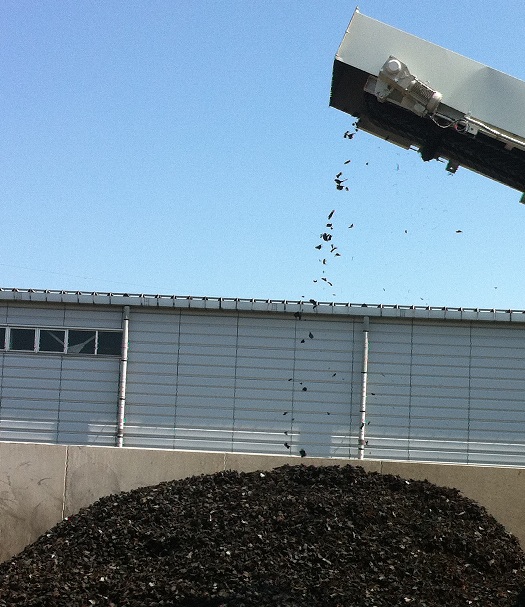Tires As Alternative Energy - The road to tire derived fuel
 More than three decades into the tire recycling movement, the largest application of scrap tires remains the alternative fuels market. And for good reason, as scrap tires are a tremendous resource of energy and iron. Industries consuming tire derived fuel (TDF) include cement producers, paper mills, and energy utilities. While TDF does not fit the traditional view of a bio-fuel, by definition bio-fuels can come from "...domestic and/or industrial wastes,” and have a wide range of applications and benefits.
More than three decades into the tire recycling movement, the largest application of scrap tires remains the alternative fuels market. And for good reason, as scrap tires are a tremendous resource of energy and iron. Industries consuming tire derived fuel (TDF) include cement producers, paper mills, and energy utilities. While TDF does not fit the traditional view of a bio-fuel, by definition bio-fuels can come from "...domestic and/or industrial wastes,” and have a wide range of applications and benefits.
For the most part, tires are shredded into small chips as an alternative energy feedstock. For cement plants, the steel retained in the chips serves a useful purpose in the manufacture of cement, reducing the volume of iron ore added into the mixture. For other fuel markets, the preference (or requirement) is for a smaller, low steel content tire chip since the steel is detrimental to these industries; reducing the energy value of TDF, and causing havoc with the feed grates in the combustion unit.
Tire derived fuel is not without its critics, who often gather their disdain for this valuable fuel from images of the occasional tire pile fire where there are no combustion controls, allowing the burning tires to pump columns of heavy black smoke into the atmosphere. One only needs to look back at the Gulf War to see the same impact, when wells were damaged and set ablaze, causing the same issue when combustion occurs with no form of control and no pollution control systems.
Numerous government and environmental studies from around the world have substantiated the energy benefits achieved with tire derived fuel, while achieving emission levels comparable to other fossil fuels. Countries considered the model for environmental responsibility, such as Sweden, endorse, support, and encourage the use of TDF. In April 2005, the U.S. EPA published the following, "Based on over 15 years of experience with more than 80 individual facilities, EPA recognizes that the use of tire-derived fuels is a viable alternative to the use of fossil fuels.”
For cement plants, TDF provides an alternative fuel at competitive costs to traditional fossil fuels. The TDF has a higher thermal value than most forms of coal, while also containing around 15% iron content in the form of tire wire. The TDF is supplied as a chip, achieved by shredding and screening, until meeting the required size which is usually around 2". In a very few cases, whole tires can be supplied, though they tend to have strict size requirements that eliminate many tires.
For traditional energy customers, TDF is preferred with very low steel content which is achieved by additional shredding or grinding, and using magnets to separate the wire. This results in a fuel product that is around 14,000 BTU/ lb, about 40% higher than TDF with wire. Industry has responded to this need for higher volumes of low steel TDF by introducing high capacity grinders which achieve the steel separation much more efficiently than previously achieved simply by shredding. This increased capacity is helping to meet a demand that far exceeds supply in much of the country.
Scrap tire processors, given the choice, would much rather convert scrap tires into granulate and powder, yielding a far better return on their investment. The reality is there is inadequate market demand for these granulates compared to the volume of scrap tires generated, necessitating the need to move more than 50% of the tire volume into TDF markets. It is not a case of producing the granulates and consumers will come! One only needs to look at the province of Ontario in Canada, where there are no TDF markets or incentives to produce TDF. All program tires are converted to granulate, vastly over-supplying the provincial needs. This results in the material traveling south into the U.S., where granulate oversupply and depressed prices impact tire processors in the Northeast, Great Lakes region, and areas much further south. Without the TDF markets, many of these U.S. processors would struggle to survive.
By having a large alternative fuel demand, scrap tires get diverted from dangerous tire piles, and kept out of landfills while allowing processors the opportunity to make substantial investments in TDF and granulate producing machinery. The reality of the situation is tire derived fuel may be the "original" bio-fuel, benefiting the environment, benefiting industry, and benefiting consumers.
Mike Hinsey is the sales manager, director of international sales at Granutech-Saturn Systems
Granutech-Saturn Systems | www.granutech.com
Volume: September/October 2015










